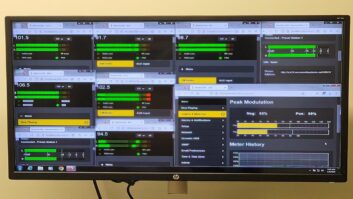WESTLAKE VILLAGE, Calif.� An interesting press release was issued by J.D. Power March 5. The release, entitled �Wireless Network Problem Incidence Increases as Texting and Web Use Grows,� basically says something most of us already believe �the performance of mobile networks is being bogged down by increasing usage. The key statistic is �Problems per 100 connections (PP100) and some of the findings are:
�
- Overall wireless network quality problem incidence is 13 PP100 network connections vs. 12 PP100 in 2014.
- On average, wireless customers experience the highest number of data quality problems on their mobile broadband device (27 PP100), followed by tablet (16 PP100) and phone (17 PP100).
- While 14 percent of wireless customers indicate having a tablet with a data plan from their wireless carrier, 9 percent have a mobile broadband device, such as an aircard or hotspot.
- When examining types of data problems, email connection errors occur more frequently on tablets than phones (7 PP100 vs. 6 PP100, respectively). �In contrast, issues related to slow mobile Web connections are more likely to occur on phones (16 PP100) than on mobile broadband devices (14 PP100) and tablets (12 PP100).
Ten problem areas of the customer experience are included in the PP100 stat: dropped calls; calls not connected; audio issues; failed/late voicemails; lost calls; text transmission failures; late text message notifications; Web connection errors; slow downloads; and email connection errors. �Carrier performance is examined in six geographic regions: Northeast, Mid-Atlantic, Southeast, North Central, Southwest and West.� In addition to evaluating the network quality experienced by customers with wireless phones, the study also�� measures the network performance of tablets and mobile broadband devices.
�
�Smartphone users send a high volume of calls, text messages and emails, which strains carrier networks. �As tablet ownership continues to rise, increased frequency of mobile video downloads further exacerbates network strain,� said Kirk Parsons, senior director and practice leader of telecommunications at J.D. Power. �Given the increase in network connection problems, carriers providing faster and more reliable connections may have a competitive advantage, particularly for cellular tablet owners, who have a high propensity to switch carriers in pursuit of quality connections.�
While I understand and appreciate the importance of streaming media for broadcasters, I also want to stress, once again, how we�re able to reach our listeners directly via over-the-air broadcasting, unfettered by the network issues being experienced by the big carriers.� I�m not the only one espousing this point of view, by the way.� Last week, Joan Warner, CEO of Commercial Radio Australia, said the following during her keynote in front of the Digital Broadcasting Symposium in Kuala Lumpur:
�Streaming does have a place in radio�s future but not as a replacement for the reliability and robustness of broadcast in delivering vital news, information etc to massive audiences live at the same time.� Broadcasters cannot afford to trust their future and their audiences to a less reliable, less robust platform and put at risk the rights of millions of people to easy to access, live, local, high quality content…�












